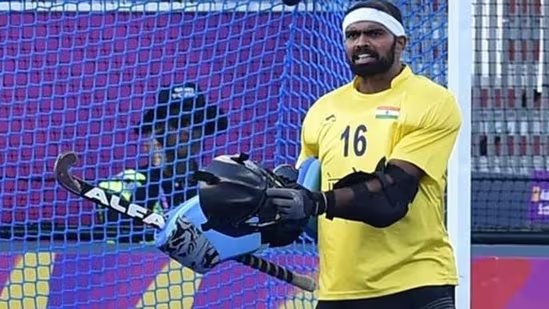'5s hockey will never replace 11-a-side': Sreejesh explains why hockey's traditional format will remain the pinnacle
The International Hockey Federation's (FIH) Hockey 5s tournament last month in Lausanne, Switzerland, which is the home of the International Olympic Council (IOC), left a buzz in the sport's conversational circles. FIH chief executive Thierry Weil said that the two-day tournament exceeded their expectations and this endorsement, coupled with the IOC's intention to make the Olympics leaner and easier financially on the host city, has led to some concerns about whether five-a-side hockey, or Hockey 5s as it has come to be called, will eventually replace the traditional 11-a-side format at the Games. India goalkeeper PR Sreejesh is of the opinion that such a thing will never happen.

While he acknowledges that 5s is good to attract new countries to the sport, the traditional format tests players and teams far more than it ever will. “I never think that five-a-side hockey will replace 11-a-side. It is like Test cricket and T20. If people are saying T20 will kill Test cricket, that is never going to happen,” Sreejesh told hindustantimes.com. The shift of format also features a sharp shift in rules - 5s is significantly different from the traditional form of the sport.
ALSO READ | 'Olympic medal is a closed chapter now, team fully focused on winning CWG gold': PR Sreejesh
Only five players are allowed in a side, as the name suggests, and the field of play is half the size of the traditional hockey field. There are no D's which means players can score from any part of the field, or ‘court’. The ball is allowed to bounce off side and back walls and it will be called out only when it goes beyond these barriers. It means that the game rarely ever stops except for injuries or to mark the end of the first of two halves, each of which goes for 10 minutes.
Sreejesh acknowledged the fact that this format is good for introducing new countries to the sport considering the significantly lesser investment required to host matches. “There are a lot of countries which cannot afford to put up 11-player hockey pitches or cannot afford the water to put on the astro-turfs,” said Sreejesh.
“That is probably why the FIH thought of using this to introduce hockey to the poorer nations who cannot afford these facilities. 5-a-side will give them the chance to play the game in a smaller area with less use of water. This is good to introduce the sport to the nation. But I don't think it will take over 11-a-side.”
Sreejesh said that the shorter format doesn't require the tactical nous needed for traditional hockey. “You just go, enjoy, and come back. You don't need to do a proper preparation for that if you are skillful and have got the power. But for the 11-a-side matches you need to have a proper team plan and preparations, have strategies for penalty corners and shootouts. It's a big job but those who have played 5s will tell you its fun. You just dodge, use your skills, score as many goals as you can. So it's fun and great to introduce the sport to a new country but 11-a-side is the classic one,” he said.
Disclaimer: The copyright of this article belongs to the original author. Reposting this article is solely for the purpose of information dissemination and does not constitute any investment advice. If there is any infringement, please contact us immediately. We will make corrections or deletions as necessary. Thank you.







